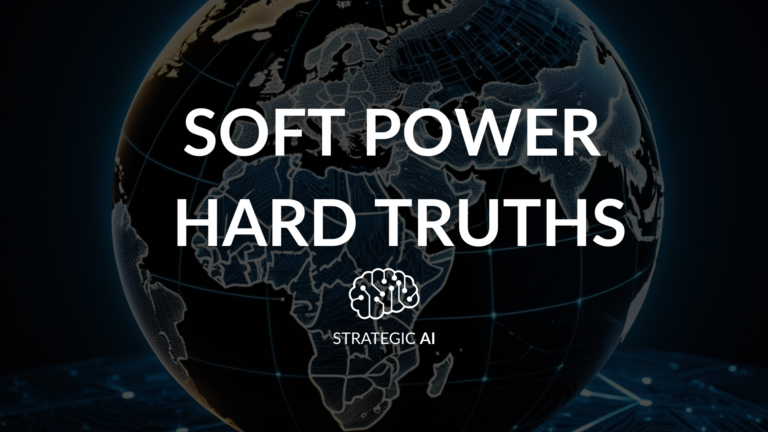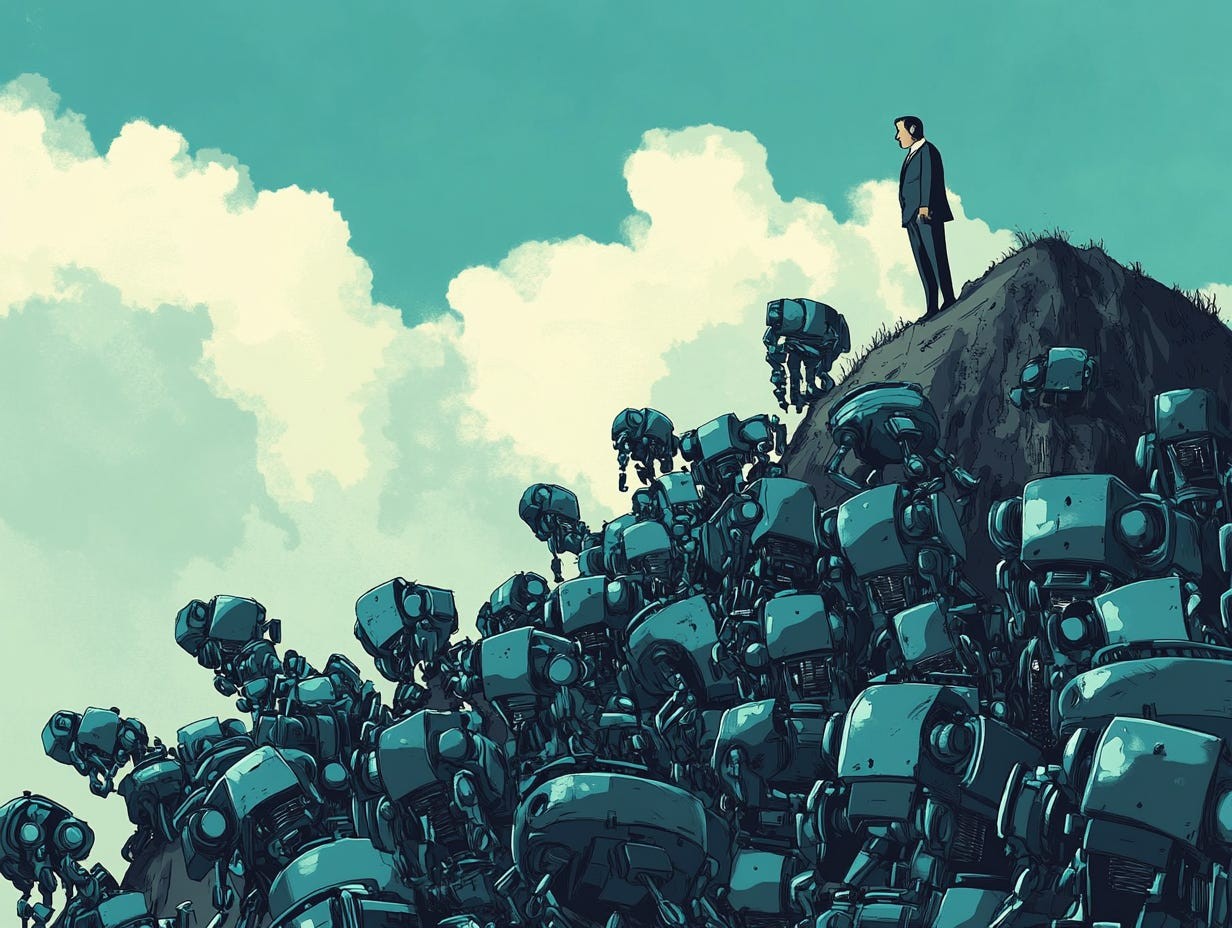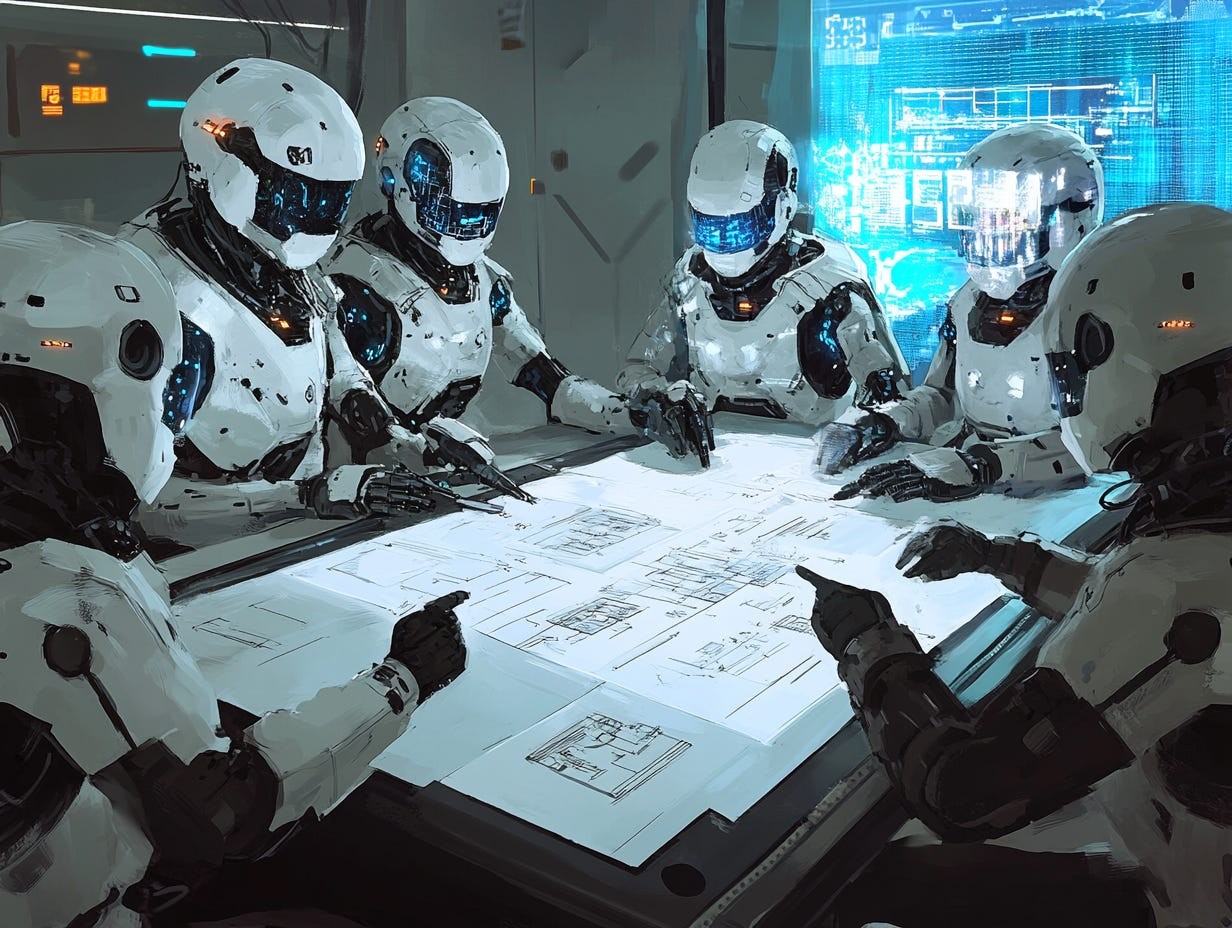
Written by Fola Yahaya

Amid the joyful chaos of Christmas with both my nuclear and extended family, I found a few moments to reflect on a truly groundbreaking year for AI. In December 2024 alone, the AI Santa delivered a sleigh-load of gifts:
In many ways, 2024 over-delivered on our AI expectations. Confounding sceptics, who have dismissed AI as nothing more than glorified pattern-matching, OpenAI’s o3 model, and the nascent era of agentic AI models it enables, will lead to systems that can independently innovate, think critically, and solve novel problems. The consensus is that this is months away, which means an explosion in semi-autonomous AI agents and the anticipation that they become competitive with human work within a fairly short timeline.
In his Reflections blog post last week, Sam Altman said:
“We believe that, in 2025, we may see the first AI agents ‘join the workforce’ and materially change the output of companies.”
We are definitely on the cusp of a moment of acceleration, a pivot point, and the question is no longer whether AI will transform industries, but how soon – and how deeply – it will change the fabric of work, creativity and strategy. In 2025, everyone from employees to policymakers needs to be actively engaged in how to use and manage AI.

This is the first year that I’ve managed to resist the urge to shackle myself with New Year’s resolutions. After an initial bout of enthusiasm, my ambitious goals are swiftly undermined by the cold winter weather and normally persist for as long my attempt at January sobriety. However, for many, given the steady drum beat of increased AI capability, I hazard a guess that contemplating a career change was a popular New Year’s resolution.
Even though AI is far from production-ready, there’s a perception that it can reduce human effort and therefore employment costs. For example, a recent report from the World Economic Forum estimates that 41% of employers intend to downsize their workforce because of AI. Couple this with the advent of AI agents – specialist versions of AI models trained to excel within a particular vertical such as media buying or giving tax advice – and there are likely to be further job losses as AI moves from chatbot to the humourless co-worker that watches and then replaces you. So, what are your options if what you’ve spent years learning to do is now being ‘AI-ed’?
A recent article in The Telegraph citing new research on AI-proof careers claims to have the answer: train to be a dentist, a plumber or a therapist. So far, so obvious. Of course, surgeons and plumbers are among the safest professions, but what career options should writers or junior accountants, for example, be considering? Moreover, given the likely improvements in robotics over the next five years, how do people avoid jumping out of the proverbial frying pan into the fire? How do you make sure your next career move is sustainable?
Surprisingly the answer is simple and time-worn. As an employee, think from the business’ perspective rather than your own. Of course your job is a means to an end but if you want to keep that job, you’ve got to offer something more than a robot, which will soon be able to out-work you at a quarter of your salary. Practically, this means:
This last approach requires no retraining – just being yourself, only better. Make people feel good about themselves, add value to clients, listen to them and deliver brilliant customer service instead of scripted responses.
If you can master these small things, you will not only always have a job, but you’ll also be highly valued as these skills become rarer in the name of efficiency.

I’m a huge fan of AI coding tools that have gifted me with the ability to prototype my app ideas quickly. They also reflect the change of pace in AI development. At the beginning of 2024, talk was of AI coding assistants such as Microsoft Copilot and Cursor, but this space has now evolved to tools that can build you a fully functional bit of software in days rather than months. The two leading text-to-app AI tools bolt.new and Loveable are proving so popular that they are exceeding the storage limits of popular code repositories such as GitHub.
Anyone can now extend the prototype phase to create a fully functional app that does what it says on the tin. Our team is currently building a CRM, a bid management tool and a company accounting tool. All of these have had their front end coded for around $100 and, factoring in some freelance expert time to build a back end and clean up the code, will probably end up costing around $2,000. This is insane! Companies and individuals will no longer need to pay for software subscriptions but will rather design what they need by prompting the AI and then pay relative pennies to finalise their bespoke applications. This has deep implications for not just coders but many professions for which an AI can get you 90% of the way without any domain expertise.
My prediction is that this is the path for most white-collar work in the medium and long term – verifying and tweaking the last mile of whatever AI has created. Whether it’s tweaking the code from Bolt or verifying that an AI agent has filed your tax return, humanity’s role will be largely relegated to a post-AI role.
This clearly has deep implications for wage economics. Instead of people being paid for presenteeism, salaries might be based on how efficiently people assess AI output or what value they bring to maintaining the efficiency of the AI agent or keeping it happy, productive and suitably fed with the right data or feedback. We live in interesting times.
That’s all for this week. Subscribe for the latest innovations and developments with AI.
So you don’t miss a thing, follow our Instagram and X pages for more creative content and insights into our work and what we do.

Network Hub, 300 Kensal Road, London, W10 5BE, UK
We deliver comprehensive communications strategies that deliver on your organisation’s objectives. Sign up to our newsletter to see the highlights once a quarter.